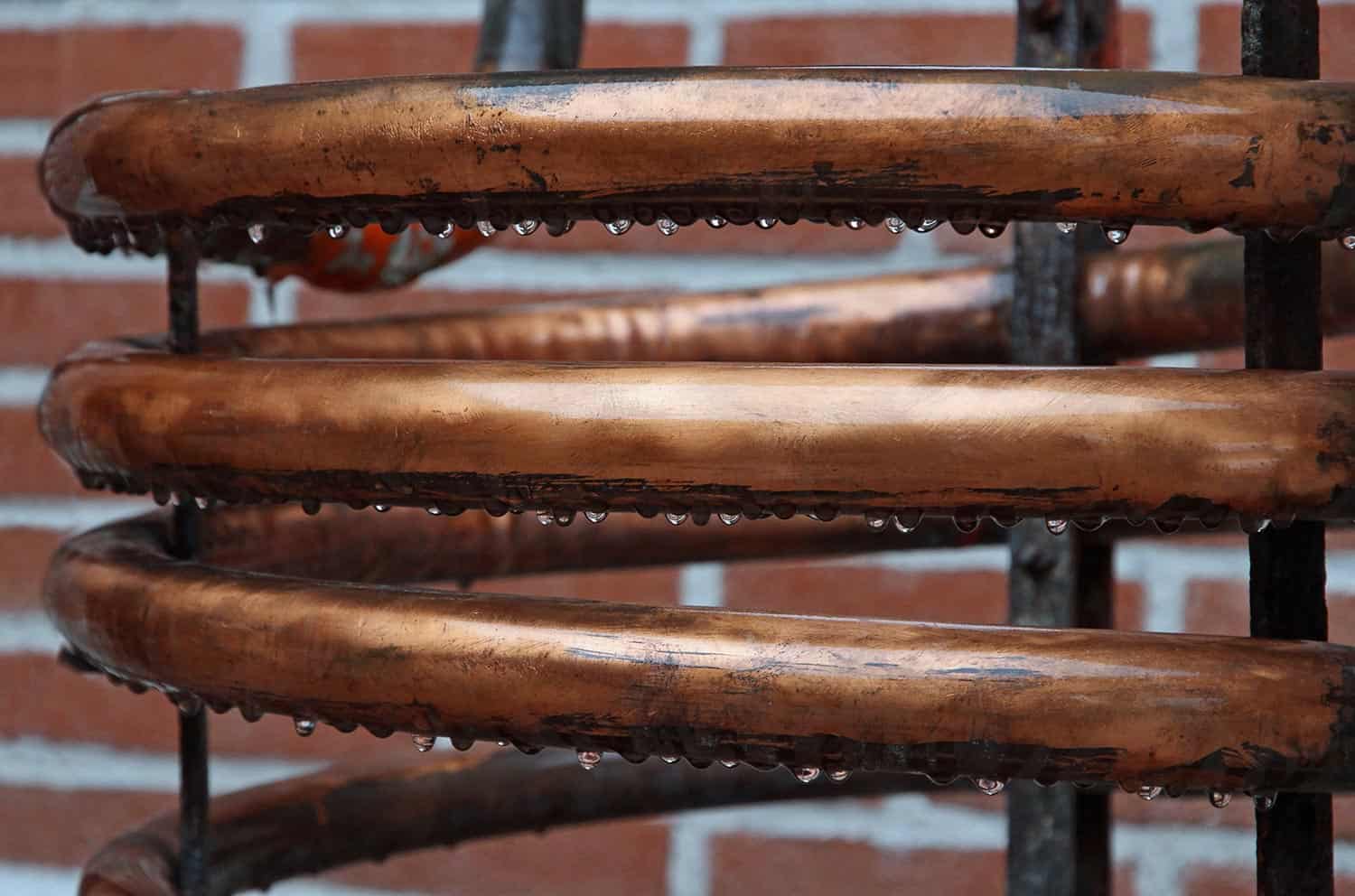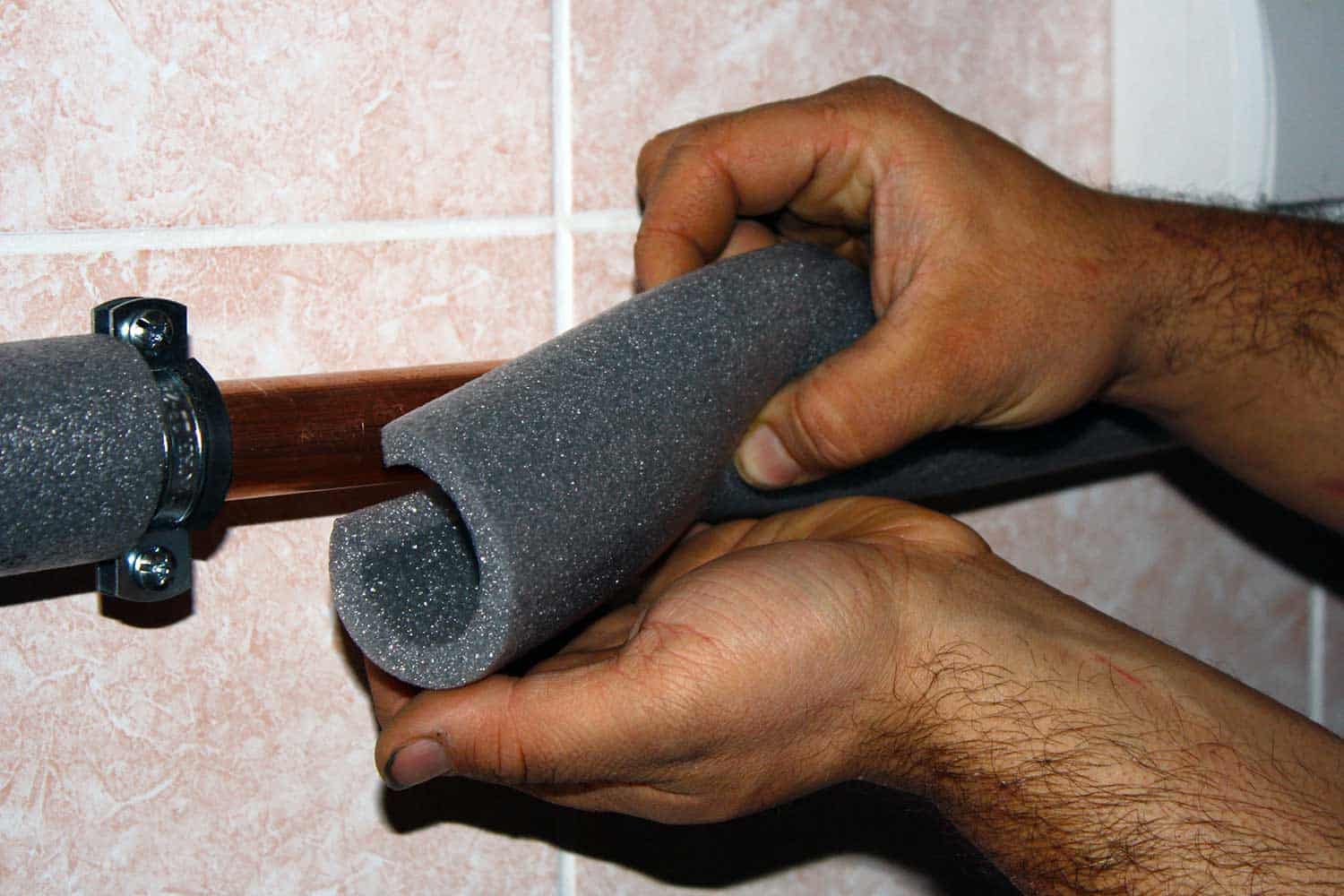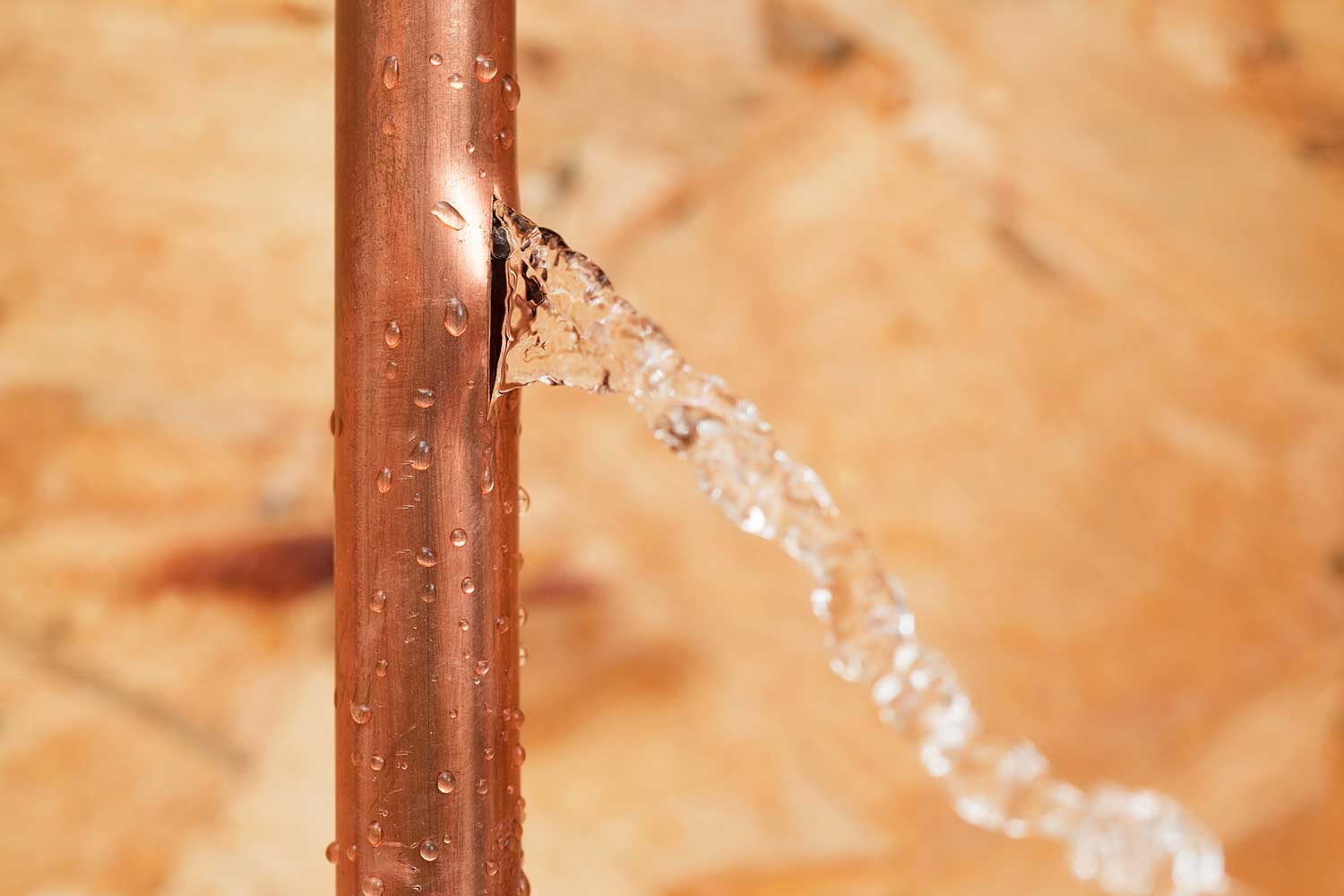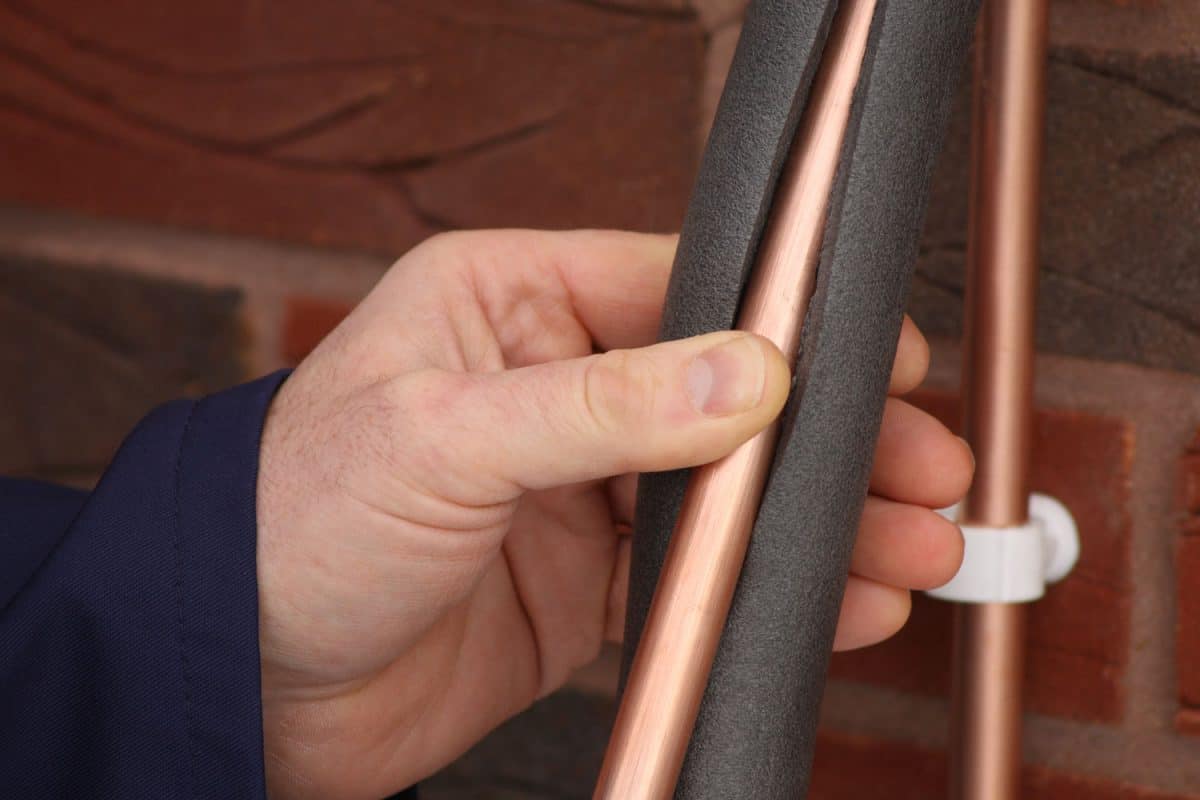Have you noticed that your copper pipes are sweating, and the area is always damp? If you want to know why this is happening and what you can do about it, you've come to the right page. We've sought the help of trusted plumbers to help us explain this situation, and here's what we learned from them.
Your copper pipes are sweating because of condensation. The warm air in the room hits the cold surface of your copper pipes, leading to the formation of water droplets on the pipes' surface. To prevent this, you should insulate your copper pipes properly by using foam, fiberglass, or tape to insulate your pipes.
Continue reading so we can explain further why condensation happens and how you can prevent your copper pipes from sweating. We'll also differentiate between sweating and leaking and discuss if too much insulation in your home can also cause condensation. Let's begin!
![A twisted new copper tubes, Why Do My Copper Pipes Sweat [And How To Fix That]](https://uooz.com/wp-content/uploads/2022/01/Why-Do-My-Copper-Pipes-Sweat..png)
Sweating Water Pipes -- what does this mean? And is it bad?
There are times when copper pipes seem to be sweating. Although this is not sweating in the literal sense of the word, it does seem that way.
You can see water droplets on their surface, which could eventually drip onto the floor and cause this area to become damp. Our main concern here is that dampness can encourage the growth of bacteria, mold, and mildew which can damage a particular portion of the house.
Sweating pipes are actually a manifestation of condensation. To clarify, this shouldn't be confused with the process of sweating copper pipes which means soldering two pipes together.

Why Pipes Sweat
Sweating happens as the warm air in the room comes into contact with the cold surface of your copper pipes. Water coming from your home's main water line can be cold, and this coldness is retained by the pipes making their surface cold as well.
Meanwhile, the air in your home can be warm or humid, especially during the summer. Warm air holds moisture, but when it collides with the cold surface of your copper pipes, it loses its ability to hold on to the moisture in the air, so it releases the water. This explains the formation of water droplets on the pipes.
You can observe the same thing when you put a glass of ice-cold water on the table during the summer. As it is exposed to the warm summer air, you will see droplets forming outside of the glass. In a sense, the glass is also sweating because of the heat.
You can also observe this phenomenon when the humidity level in your home is high. Ideally, it should only be between 30% and 50%. Anything beyond this is considered high humidity, which can induce sweating in your cold copper pipes.
Sweating copper pipes can be a normal occurrence. It becomes a problem when there's excessive moisture and the water always drips on the wall and floor, which can weaken their surfaces, leading to rot and damage. That's why it is always a good idea to take the necessary actions to protect your pipes from sweating.
How do you insulate copper pipes?

The good news is that it is easy to prevent sweating of your copper pipes, and the solution is very affordable too! Experts recommend that you insulate your pipes to keep them from getting in contact with the warm or humid air in your home.
When your copper pipes are insulated, the temperature on their walls is raised which prevents condensation from happening. Warm air will no longer collide with a cold surface. As the difference in their temperatures is reduced, the copper pipes will no longer sweat during the summer or humid days.
There are different insulation options that you can choose from. There's a pipe wrap insulation tape, fiberglass wrap on insulation, foam pipe insulation, and no-drip tape. The manner of installation would depend on the option that you choose.
Check out this link to find this fiberglass pipe wrap on Amazon.
In general, you have to wrap your pipes tightly with your chosen form of insulation to make sure that no amount of outside air can pass through. Seal the seams in between the insulation wraps. You can use duct tape for this.
Click this link to find this duct tape on Amazon.
You should also determine the size of your copper pipes. Use a measuring tape to get their circumference and diameter so you can purchase the correct size. Measure the length of the pipes as well to ensure that you have an adequate supply. Just follow the manufacturer's instructions so that you can insulate your copper pipes properly.
How do you know if you have a leak or condensation?

When you see water dripping on the wall or floor, you might jump to the conclusion that there's a leak in your pipes. But before you proceed to seal your pipes or solder them, you must first determine if it's actually a leak or your pipes are just sweating because of the high humidity level in the air.
Sure, these two both involve dripping water, but they require different solutions, so you better know how to differentiate a leak from condensation. Good thing it just takes a simple test to find out!
You can get a humidity tester to check the humidity level in the room where the copper pipes are sweating. If the humidity level is high or above 60%, it is very possible that your pipes are just sweating. As stated above, you can insulate your pipes to prevent this from happening. Air conditioners and dehumidifiers can also help fix this issue.
If the humidity level in the room is within average, then it's highly likely that you have a leaking pipe. You can conduct a visual examination to locate the source of the leak or call your trusted plumber for repair.
Find this humidity gauge on Amazon.
Can too much insulation cause condensation?

So, we've been talking about insulating your copper pipes to prevent condensation or sweating, but is there such a thing as too much insulation in your home? Many are pointing out this irony.
Despite the advancements in home insulation that we now enjoy, more and more homeowners are having issues regarding condensation and dampness and the troubles that they bring.
As they say, when you do something excessively, no matter how good the intention is, it can also be harmful to you. Some can even result in the very thing that you're trying to prevent or avoid from happening. Insulation is one such example.
Over-insulation happens when there's no more proper ventilation in your house. Humid air can no longer escape outside since the air can't circulate properly.
A higher level of indoor humidity is the ideal environment for condensation. When the warm air touches the cool surfaces in your home such as pipes and walls, condensation occurs making everything damp and prone to the buildup of molds and mildew.
This is why insulating your home isn't enough. There should be a perfect balance between insulation and air ventilation to still allow air to circulate freely. Do not insulate every part of your home.
There should be vents and extractor fans in moisture-prone areas of the house. Aside from pulling stale air out and allowing fresh air to enter, they will also help dry out those areas where there's an excess amount of moisture. You can also use a dehumidifier to remove excess moisture inside your home.
Click this link to find this dehumidifier on Amazon.
Final Thoughts
When the humidity level in your home gets too high, and warm air touches the cold surface of your copper pipes, expect condensation to happen. You can provide your pipes with proper insulation to prevent this from happening. This way, you'll avoid dampness and the troubles that come with it.
For more resources regarding copper pipes in your home, you may visit the following links:




